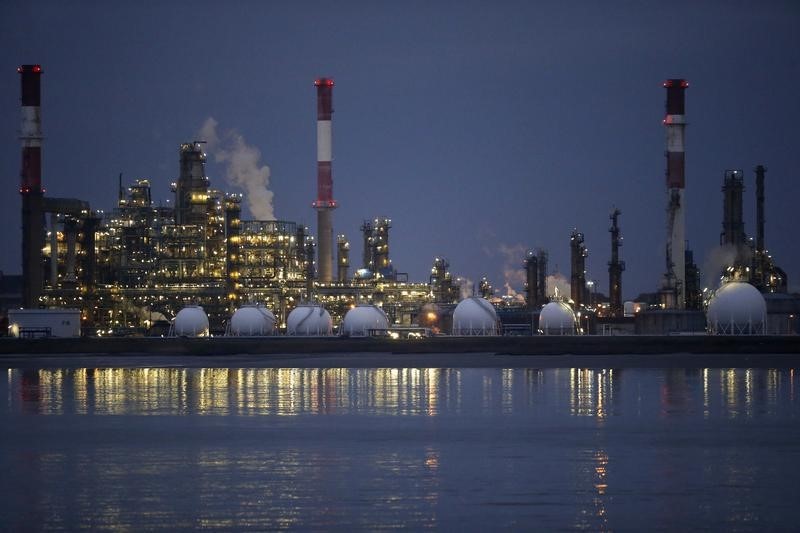Investing.com -- Oil prices settled higher Tuesday, driven by optimism about tighter markets this year following softer exports from Iraq and Saudi Arabia.
By 14:30 ET (18:30 GMT), the U.S. crude futures settle 1% higher at $83.53 a barrel and the Brent contract rose 0.5% to $87.31 a barrel.
Oil buoyed by tight supply outlook
Oil prices have surged over the past week as signs of increased U.S. refinery activity, improved Chinese demand and persistent disruptions in the Middle East presented a tight outlook for oil markets.
This notion was furthered by Iraq, the second biggest producer in the Organization of Petroleum Exporting Countries, stating that it will cut crude exports to compensate for higher production so far in 2024.
"The move is primarily to absorb the oversupply from Jan’24-Feb’24 and to showcase the nation’s commitment to stick to its voluntary oil cuts as part of the OPEC+ agreement," according to analysts at ING, in a note.
"Recent OPEC numbers showed that Iraq pumped 0.2m b/d of oil above its agreed quota of 4m b/d last month."
Data from Saudi Arabia also showed crude exports from OPEC’s biggest producer fell for a second straight month in January. In Russia, Ukrainian attacks put a key fuel refinery out of commission.
Signs of tighter supplies also come amid some improving economic indicators from major crude consumers, specifically China. The country’s industrial production and fixed asset investment grew more than expected in the first two months of 2024, while travel demand also recovered to pre-COVID levels during the Lunar New Year holiday.
It remains to be seen whether China can carry this momentum into the coming months, especially as consumer spending still remains weak. Unemployment also unexpectedly rose in the January-February period.
Fed decision awaited
The Fed meeting kicked off on Tuesday, with the committee widely expected to keep interest rates on hold Wednesday,.
But markets were wary of any more hawkish signals from the central bank, given that the U.S. economy has remained largely resilient to the higher interest rates, while inflation remained elevated over the past two months.
While strength in the U.S. economy bodes well for fuel demand in the world's biggest fuel consumer, higher-for-longer rates could potentially stymie demand later in 2024.
Beyond the Fed, focus this week is also on a barrage of purchasing managers index readings for March, from the U.S. and other major economies.
U.S. crude stocks due - API
The American Petroleum Institute announces its estimate of U.S. crude inventories later in the session. Economist expect that the weekly crude stockpiles rose by 77,000 barrels for the week ended March 15.
Crude stockpiles have been declining following weeks of larger-than-expected builds amid a pick-up in refinery activity.
The API report comes just a day ahead of Energy Information Administration's weekly inventory report that should show draws across crude, gasoline and distillate stockpiles, Macquarie said.
"[W]ith the total US crude balance realizing much tighter than we had anticipated, marking a prolonged stretch of tighter-than-expected weekly balances," Macquarie said.
(Peter Nurse, Ambar Warrick contributed to this article.)
